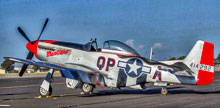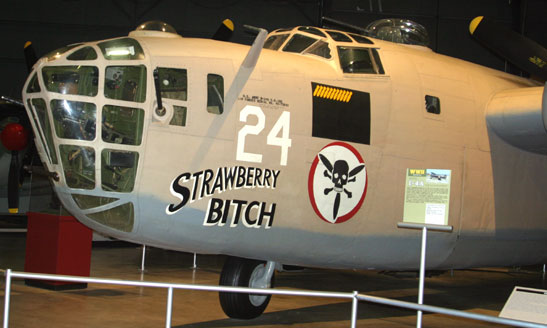B-24 Liberator

The Consolidated B-24 Liberator was an American heavy bomber, designed by Consolidated Aircraft. It was used in World War II by many Allied air forces and navies, and by every branch of the American armed forces.
A Brief History Of The B-24 Liberator
The Consolidated B-24 Liberator was an American heavy bomber, designed by Consolidated Aircraft. It was used in World War II by many Allied air forces and navies, and by every branch of the American armed forces.
Its capacious slab-sided fuselage enclosed a central bomb bay that held up to 8,000 lb of payload. The bomb bay was divided into front and rear compartments, with a central catwalk just nine inches wide that drew universal crew condemnation. The B-24 was often called a “The Flying Coffin” because the only entry and exit from the bomber was in the rear.
In spite of this, the B-24 was a workhorse of the U.S. Eighth Air Force in bombing campaigns against Germany, comprising one-third of its heavy bomber strength. Thousands of B-24s, disembarking from bases in England, dropped hundreds of thousands of tons of bombs and incendiaries on German military and industrial targets.
By the end of World War II the Liberator had become the most produced Allied heavy bomber in history, and the most produced American military aircraft at over 18,400 units, due primarily to Henry Ford and the efforts of American industry. It still claims the distinction of being the most-produced American military aircraft.
After the war, the USAF declared the B-24 obsolete and surplus stateside aircraft were flown to desert storage in the US southwest. In the Pacific theatre, many aircraft were parked, the oil drained from the engines and abandoned for reclamation. By 1950, except for a single B-24D held for preservation, the great fleet of Liberators had vanished. The last flight of a B-24 by the USAF was on May 12, 1959 when the Strawberry Bitch departed Davis–Monthan Air Force Base for the Air Force Museum at Wright-Patterson Air Force Base.
|
Specifications |
|
|
Role |
Heavy bomber |
|
Manufacturer |
Consolidated Aircraft |
|
First flight |
December 29, 1939 |
|
Propulsion |
|
|
Four-engine |
Pratt & Whitney R-1830 turbosupercharged radial engines, 1,200 hp (900 kW) each |
|
Performance |
|
|
Max speed |
290 m/h |
|
Max cruising speed |
215 m/h |
|
Initial rate of climb |
1,025 ft/m |
|
Service ceiling |
28,000 ft |
|
Max range (no reserves) |
1,800 nm |
|
Weight (empty) |
36,500 lbs |
|
Max takeoff |
65,000 lbs |
|
Dimensions |
|
|
Wing span |
110′ |
|
Length |
67′ 8″ |
|
Height |
18′ |
|
Wing area |
1,048 sq ft |
|
Seating Capacity |
7-10 |
|
Armament |
|
|
• Guns: 10 × .50 caliber (12.7 mm) M2 Browning machine guns in 4 turrets and two waist positions |
|
|
• Bombs: |
|
|
• Short range (˜400 mi): 8,000 lb (3,600 kg) |
|
|
• Long range (˜800 mi): 5,000 lb (2,300 kg) |
|
|
• Very long range (˜1,200 mi): 2,700 lb (1,200 kg) |
|








































